Past exhibition November 2017 – April 2018
Into the Archive - Ferrari: Under the Skin
Take a look back at the museum's spin with luxury racing cars.
Few car brands are as synonymous with glamour, luxury and speed than Ferrari. 2017 marked the Italian marque’s 70th anniversary, and what better way for the Design Museum to celebrate this milestone than with an exhibition?
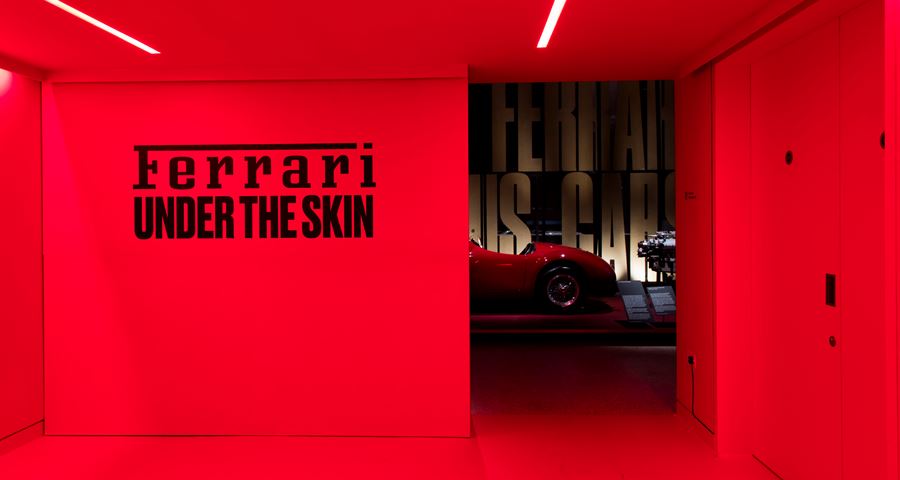
The entrance to Ferrari: Under the Skin
After passing through a stunning red entranceway, Ferrari: Under the Skin opened with an introduction to Ferrari’s supremely talented founder, Enzo Ferrari.
As a young man, Enzo had been a passionate racing driver. Later he ran racing teams for Alfa Romeo and for the Scuderia Ferrari stable, but the cars were always built by others. In March 1947, amid the confusion of post-war Italy, Enzo completed his first car – the Ferrari 125 S, which marked the start of a remarkable dynasty of cars.
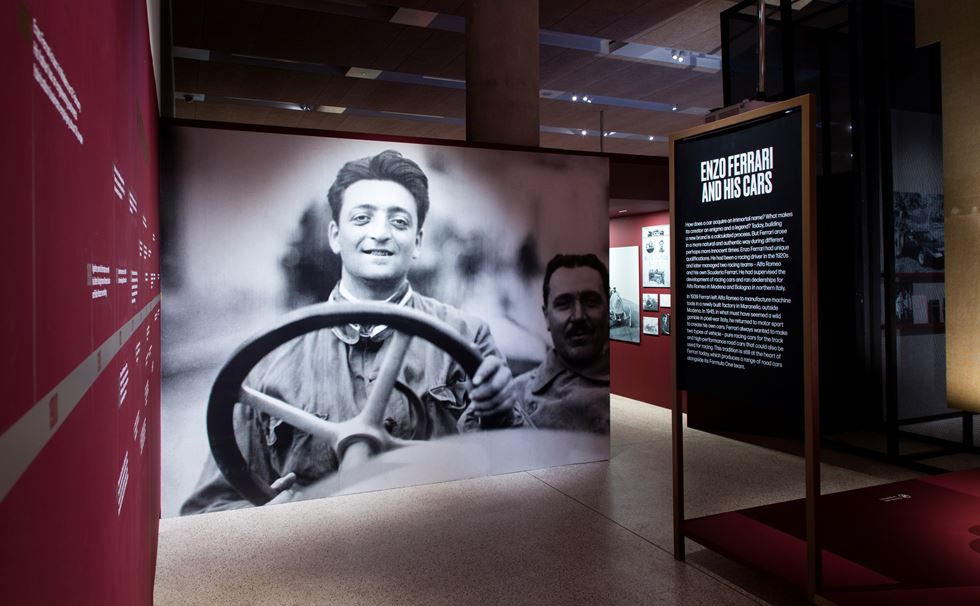
Enzo Ferrari as a racing driver at the Targa Florio in 1920
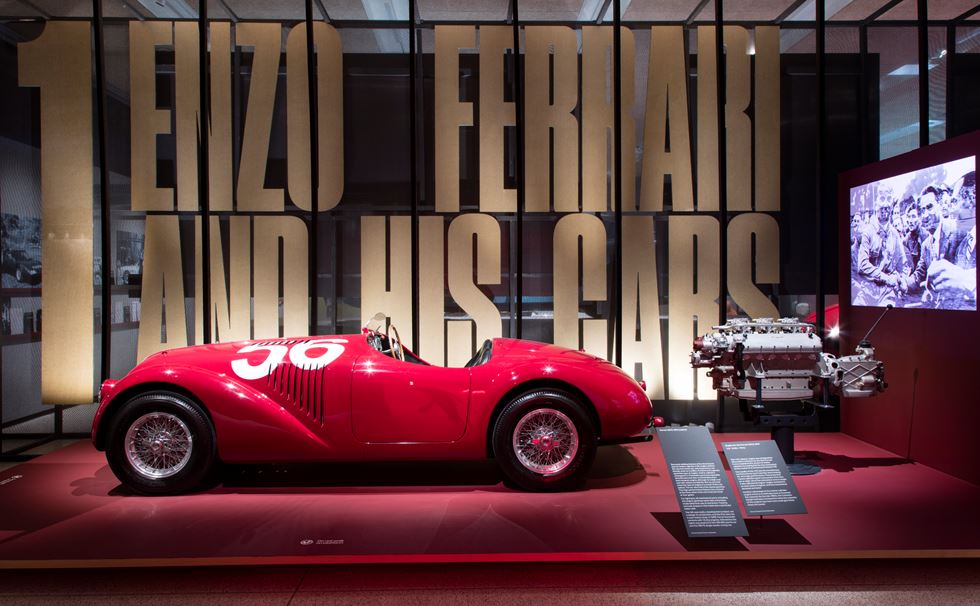
A replica model of the 125 S, the first Ferrari

Detail of a cross-section view of the first Ferrari, the 125 S


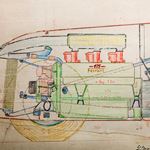
The following section featured one of the most striking views ever seen at the Design Museum, with a full-size wooden buck of the streamlined Ferrari 365 P ‘Dino’ racer sitting underneath a panel-beaten aluminium shell of a Ferrari GT0 250.
Both were designed by Pininfarina, the automobile design firm run by Battisa ‘Pinin’ Farina, and were made by Sergio Scaglietti, whose workshops were located just across the road from Ferrari’s headquarters in Maranello. Other displays in this section included a wireframe model for the Ferrari GT0 250 (1962), and a clay model for the Ferrari J50 (2015).

The ‘Form of a Ferrari’ section
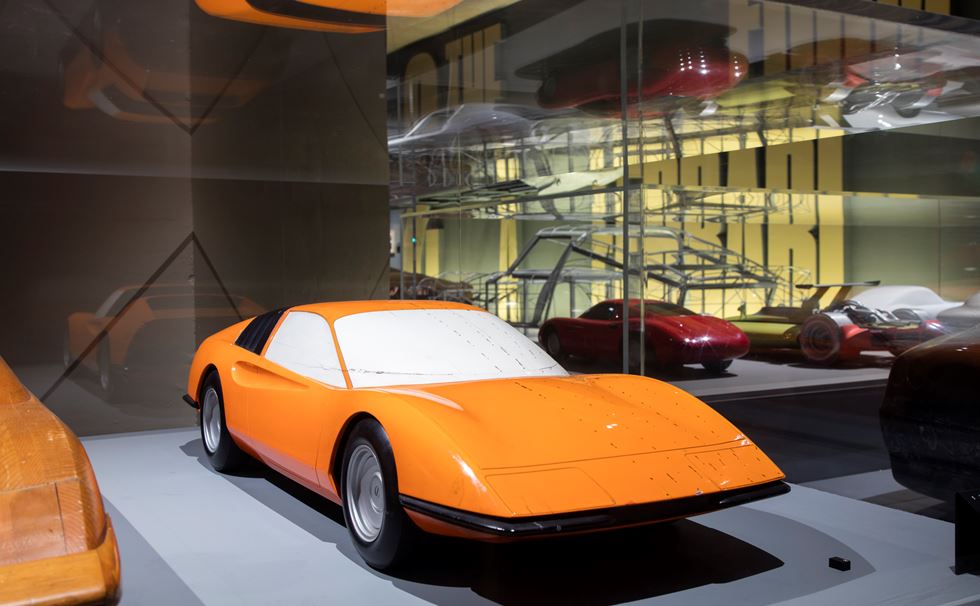
Model for the Ferrari 365 GTB/4, also known as the Daytona
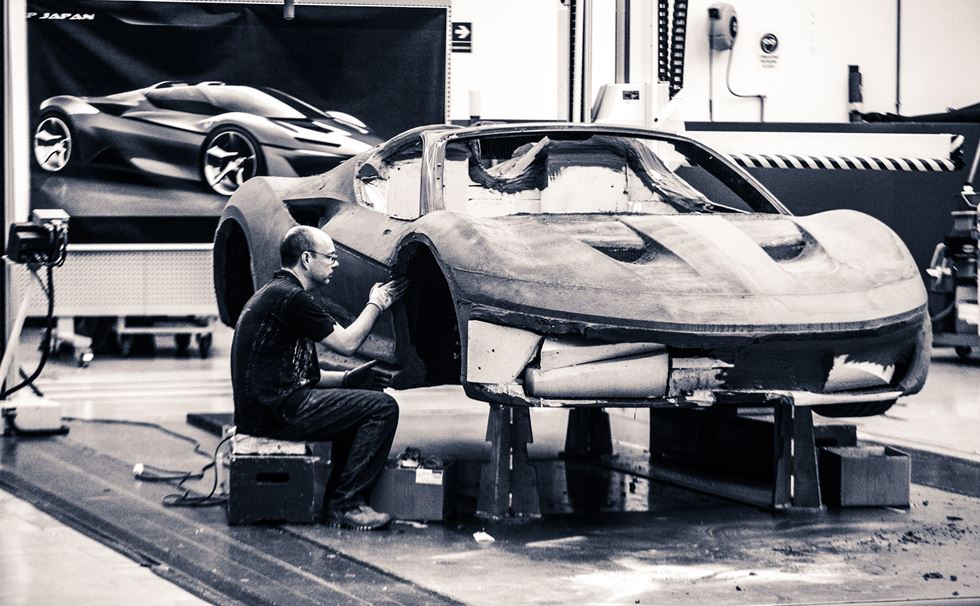
Building the clay model for the Ferrari J50
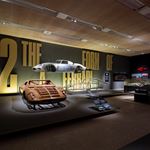
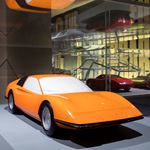
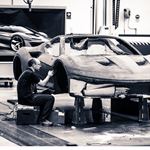
Even for enthusiasts, it’s easy to see Ferrari cars as little more than beautiful machines while forgetting the ground-breaking engineering behind them. The following section paid careful homage to the unseen engineering design that underpinned Ferarri’s reputation for speed and quality – from the brakes to the engines, carburettors and chassis. Each is specifically designed to do its job, and no Ferrari car features off-the shelf parts.
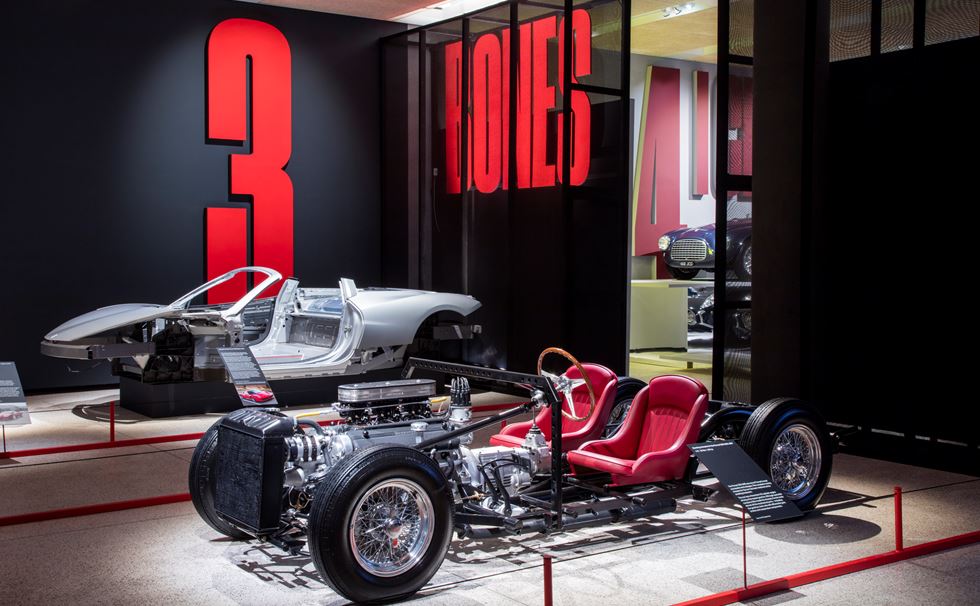
The ‘Bones of a Ferrari’ section
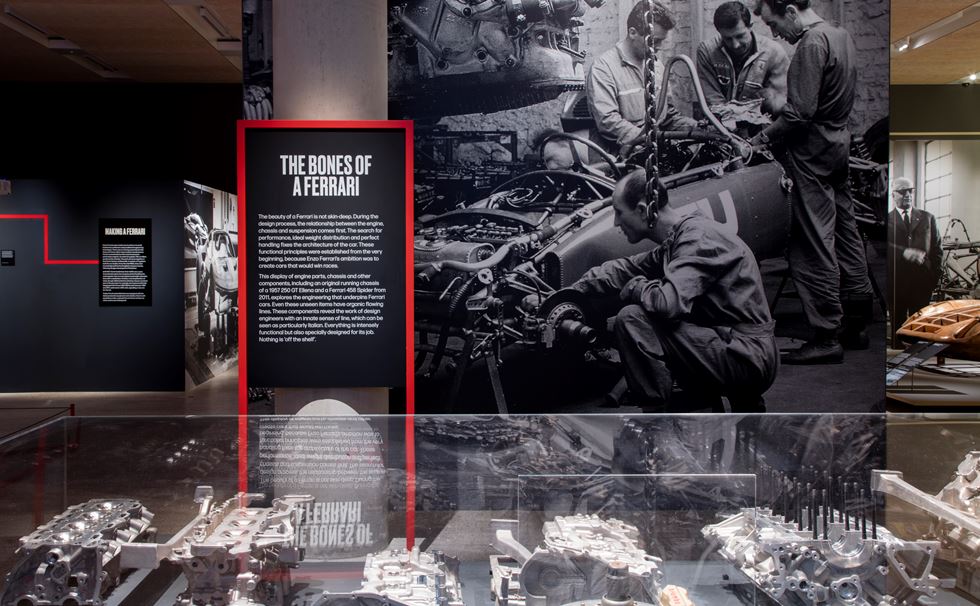
Various engineering and mechanical components

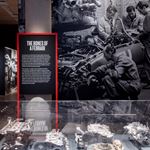
Enzo Ferrari was more than just the founder of Ferrari; he was a brilliant entrepreneur who understood the power of a strong brand. He invested considerable time and resources in developing a signature Ferrari identity, including the near-ubiquitous red livery and the company’s distinctive logo, featuring a rearing black horse against a yellow background (the colour of Modena).

Iterations of the Ferrari brand
As the company grew, the Ferrari brand quickly became synonymous with glamour and style. Discerning clients, including film stars, directors, artists and racing drivers amongst their numbers, would queue up to buy the desirable Ferrari models such the 288 GTO (1984) and the F40 (1987).
Steve McQueen owned a 275 GTB/4, as did Clint Eastwood. Opera singer Luciano Pavarotti and actor Sylvester Stallone both owned a F40. In a particularly grand gesture, film director Roberto Rossellini commissioned a custom Ferrari for his wife, actor Ingrid Bergman.
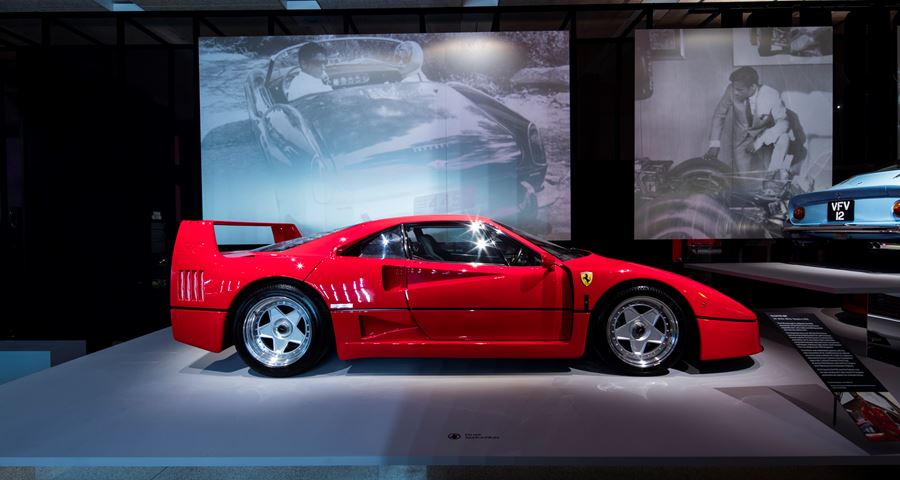
Ferrari F40
Unusually for a car manufacturer, Enzo Ferrari did not form his company to sell cars. His passion was to race, and he sold cars in order to keep ahead of his competitors. As he said in 1958, ‘I want to build a car that’s faster than all of them, and then I want to die.’
For many, Ferrari is the car brand most closely associated with racing, and Scuderia Ferrari is the only constructor to take part in every single season of Formula 1 since the competition’s launch in 1950. The final hall culminated with a swooping procession of Ferrari race cars, from Alberto Ascari’s Tipo 500 Grand Prix car to a 250 GT SWB driven by Stirling Moss, culminating in Michael Schumacher’s Formula 1 World Championship-winning car, the F1-2000. One memorable display showed racing helmets worn by some of the most outstanding Ferrari drivers over the last 70 years, including Frolián González, Juan Manuel Fangio and Niki Lauda.
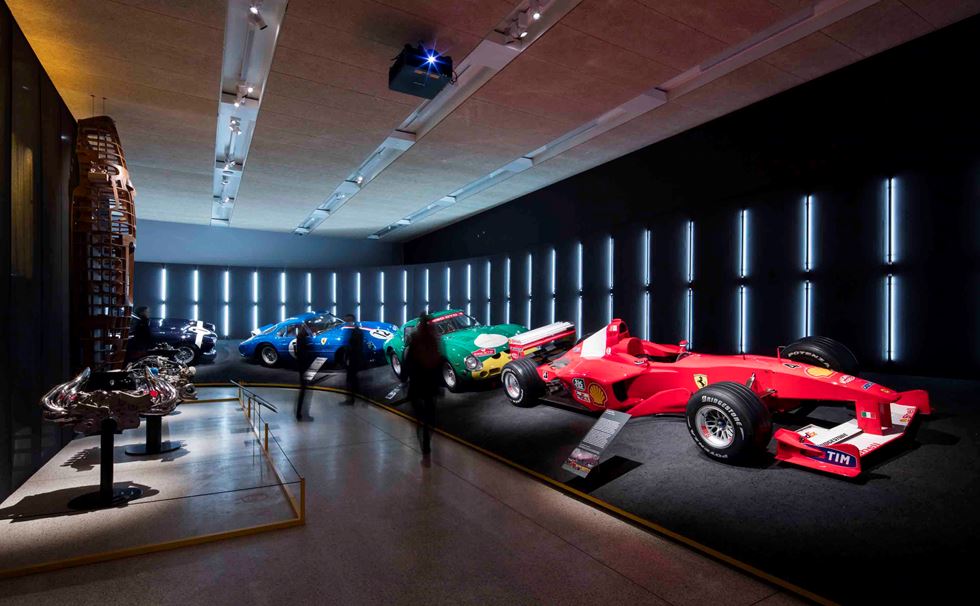
A suite of racing cars developed by Scuderia Ferrari
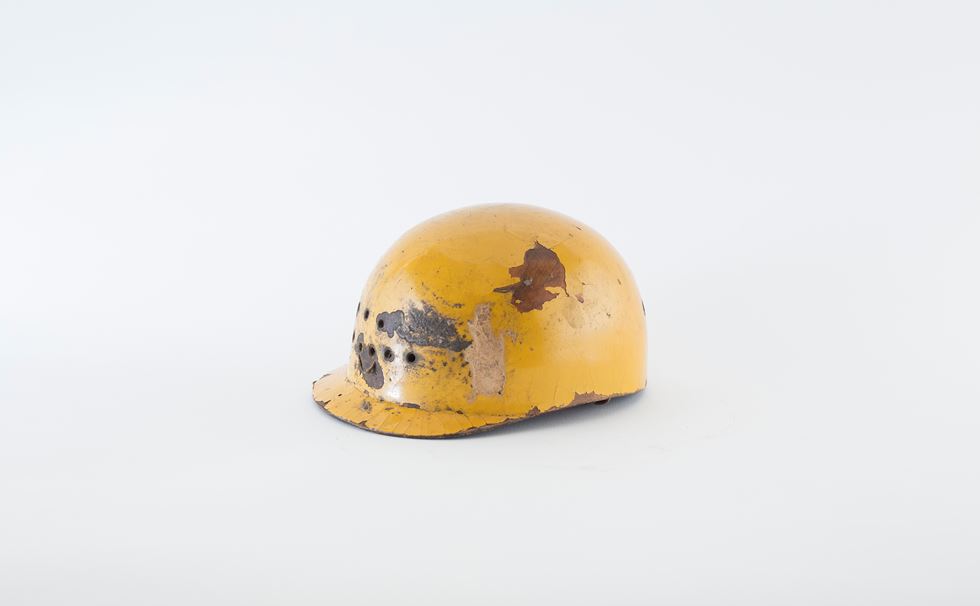
Frolián González’s helmet
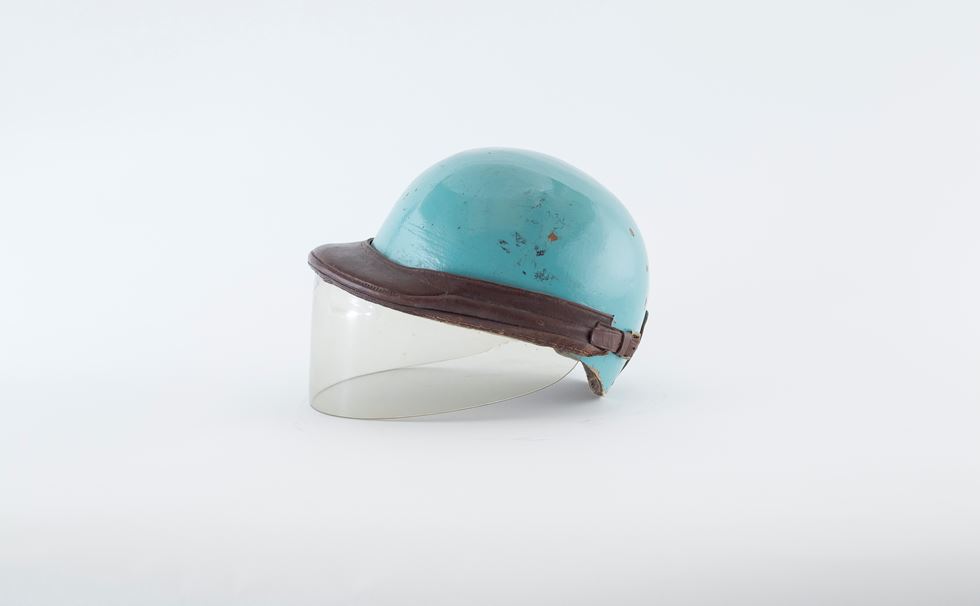
Alberto Ascari’s helmet
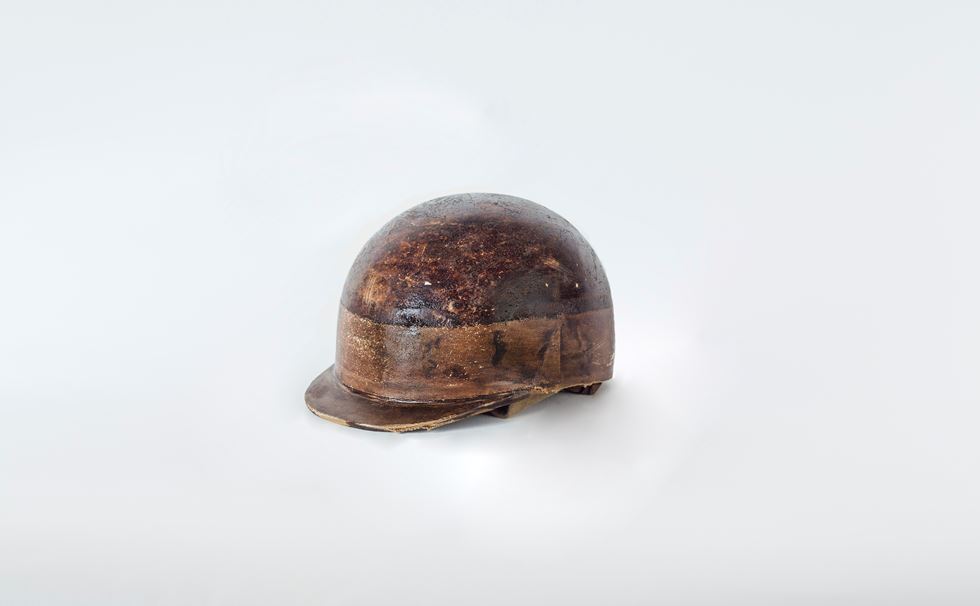
Juan Manuel Fangio’s helmet
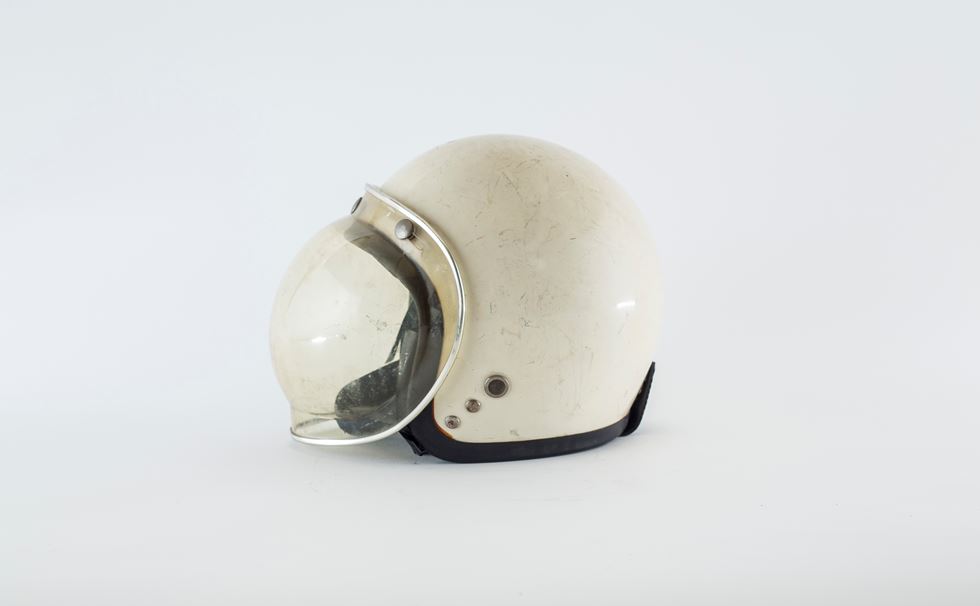
Phil Hill’s helmet
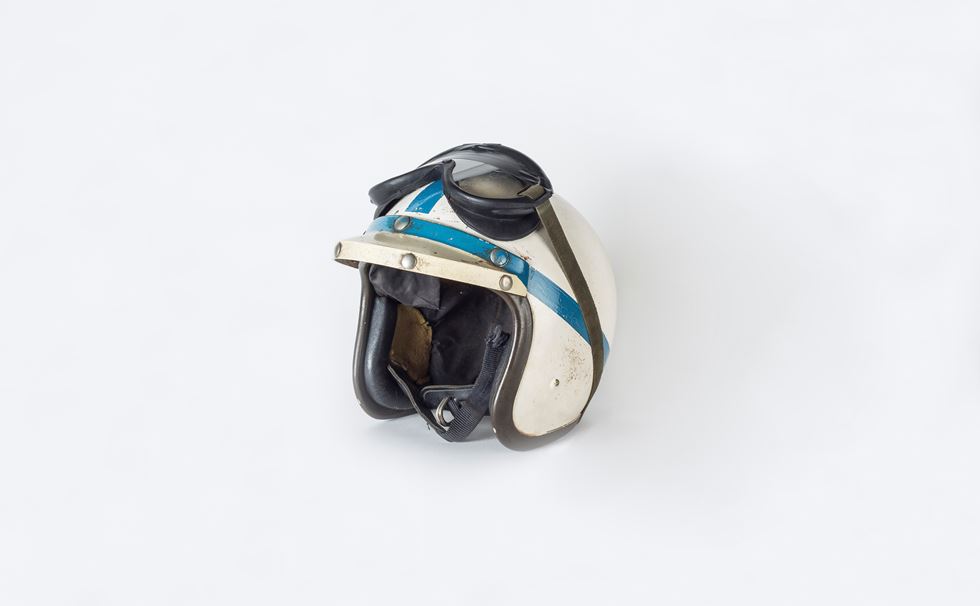
John Surtees’ helmet
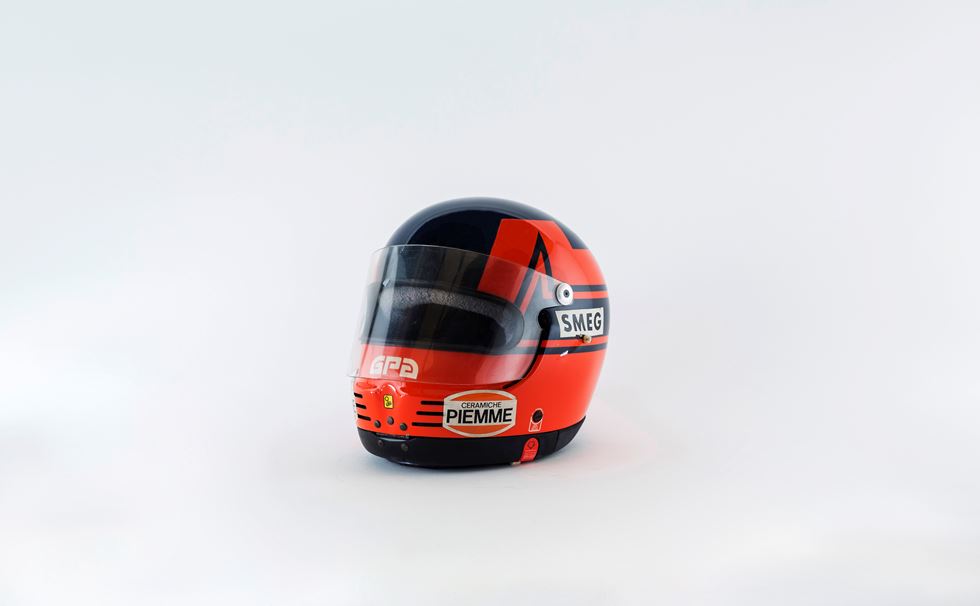
Gilles Villeneuve’s helmet
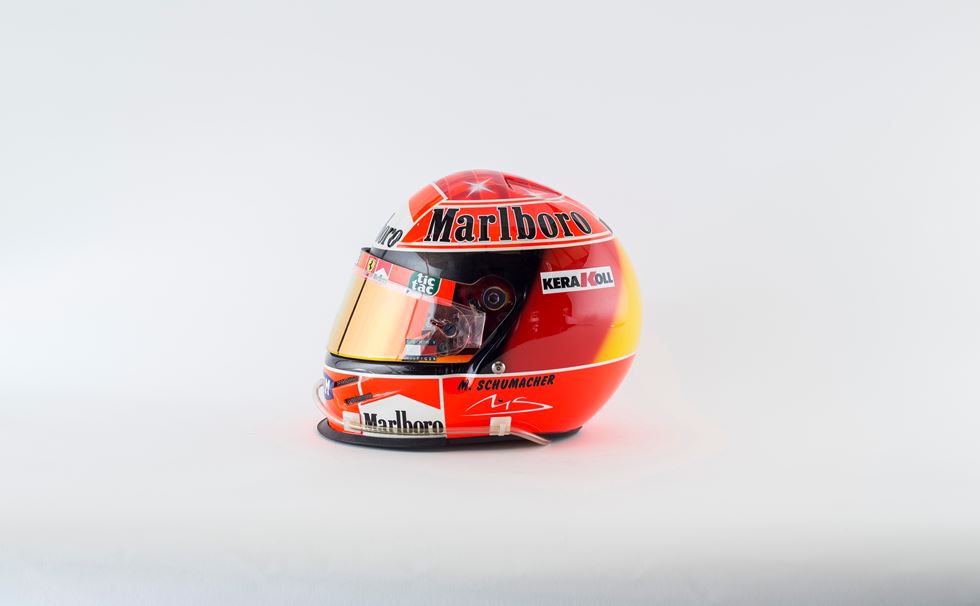
Michael Schumacher’s helmet



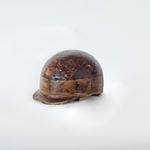
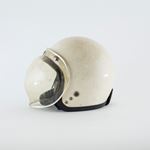
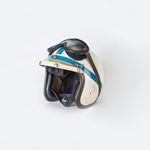
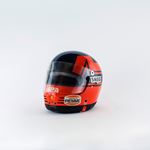
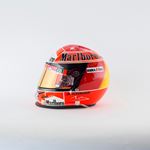
Ferrari: Under the Skin brought together £140m worth of rare cars, as well as original drawings and memorabilia never before seen in public. It was also one of the most beautifully designed shows to be seen at the Design Museum. Exhibition designer Marina Willer, a partner at Pentagram, dove deep into the Ferrari archives to develop the look of the show. Material swatches used by the Carrozzeria Scaglietti workshop provided the direction for the exhibition’s colour palette, while Ferrari posters, brochures and ephemera were the inspiration for the typography. Even the signage was inspired by directional and safety markings found on the Ferrari factory floor in Maranello.
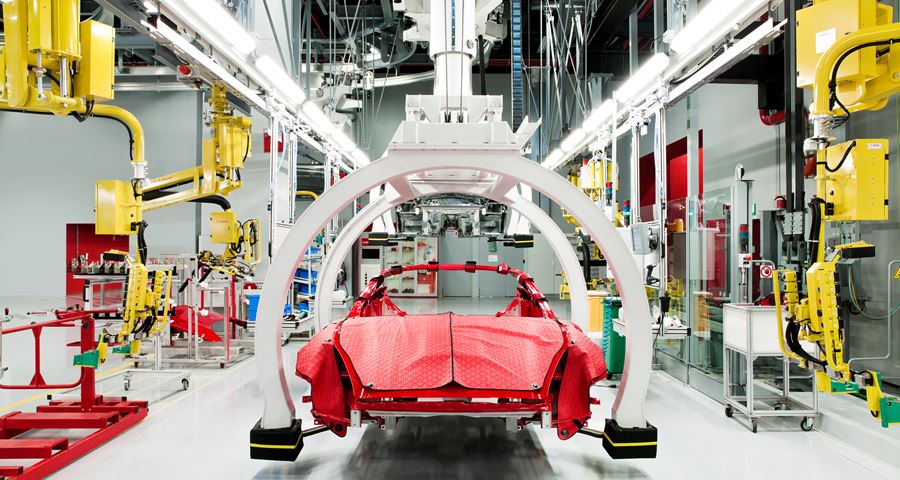
Modern day production at the Ferrari factory in Marinello
When the show closed, Ferrari: Under the Skin had broken all previous visitor records in the Design Museum’s history with over 100,000 visitors. With the 1973 Le Mans Ecurie Francorchamps’ Ferrari 365 GTB/4 Daytona racer given place of prominence in the Design Museum’s atrium for the duration of the show, there was little doubt that this would be a special exhibition. To finish, here’s a photograph of this spectacular car surrounded by admirers at the private view in November 2017.
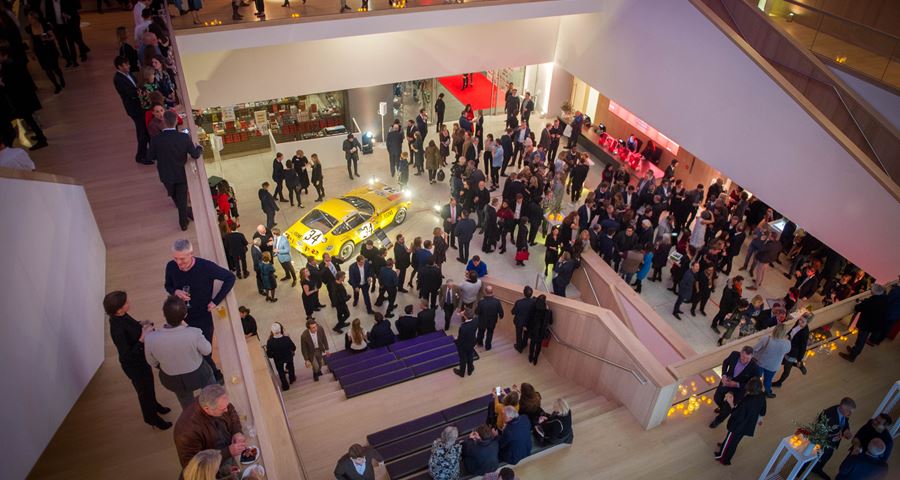
The Ferrari 365 GTB/4 Daytona in the Design Museum’s atrium
Curated by Andrew Nahum and Gemma Curtin, this exhibition was developed in collaboration with Ferrari S.p.a. and Museo Ferrari, Maranello.
into the archive
shop online